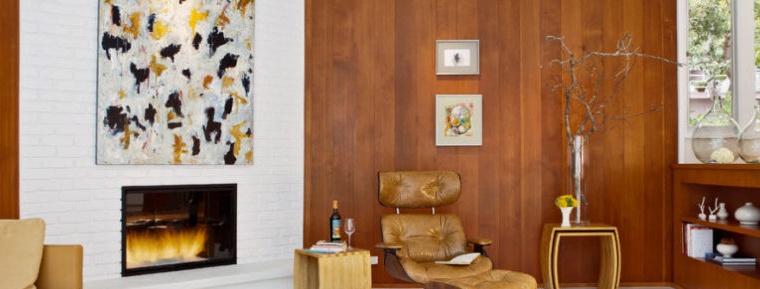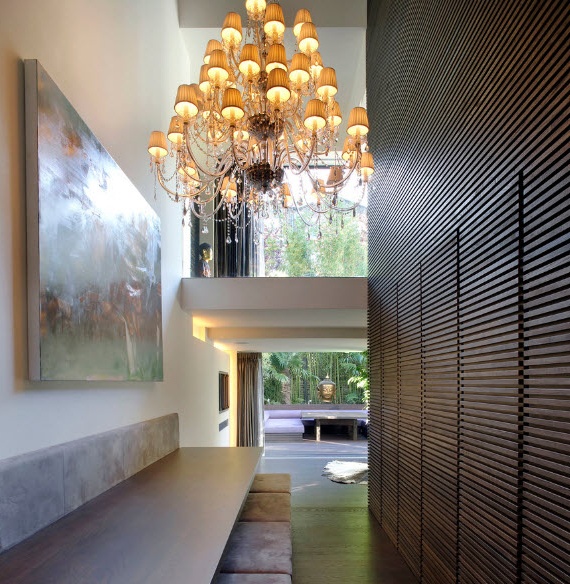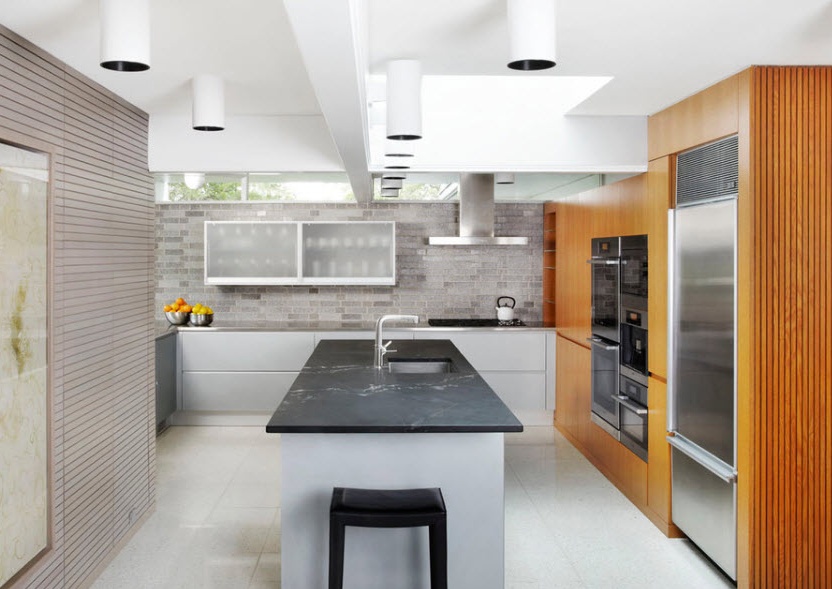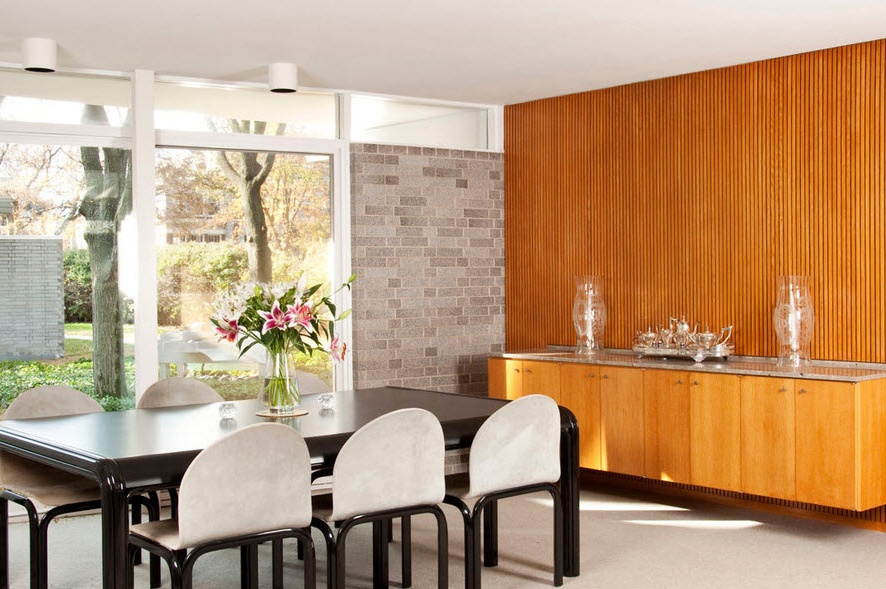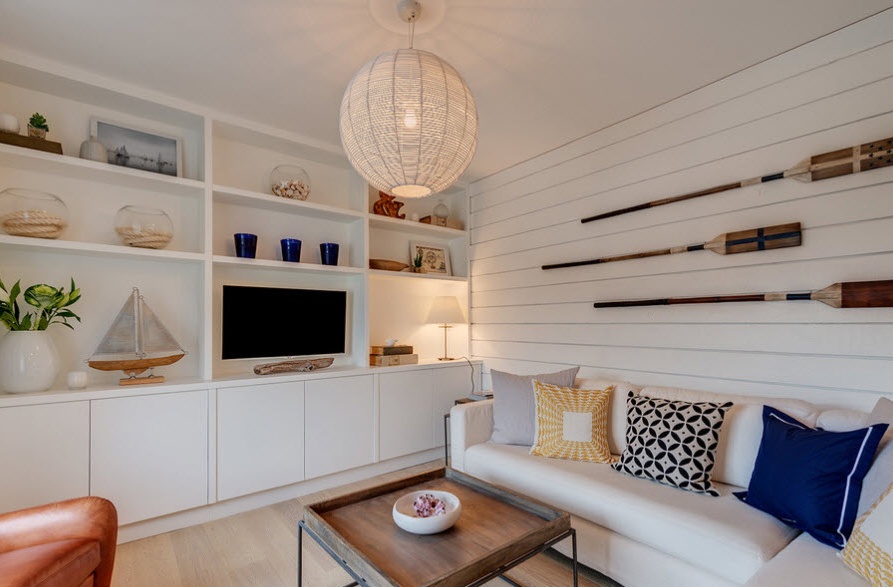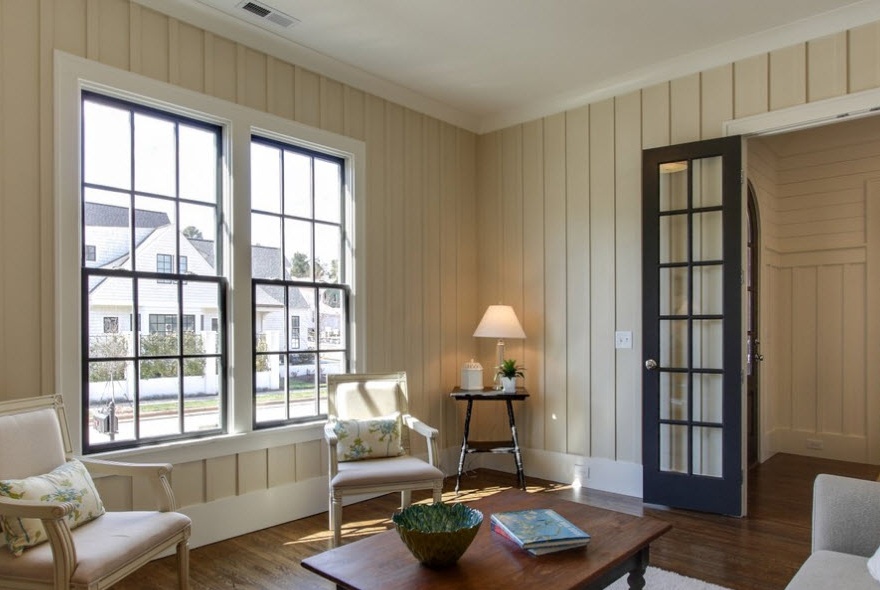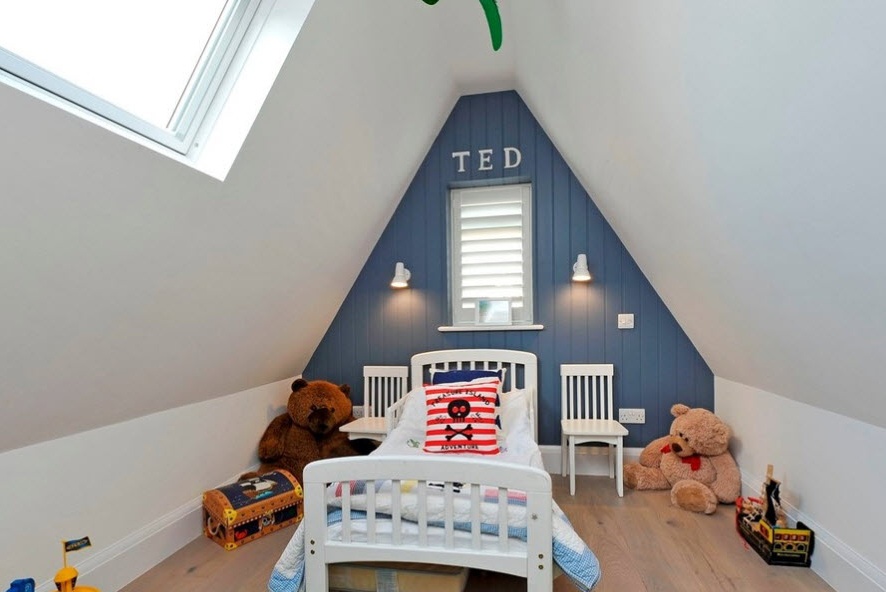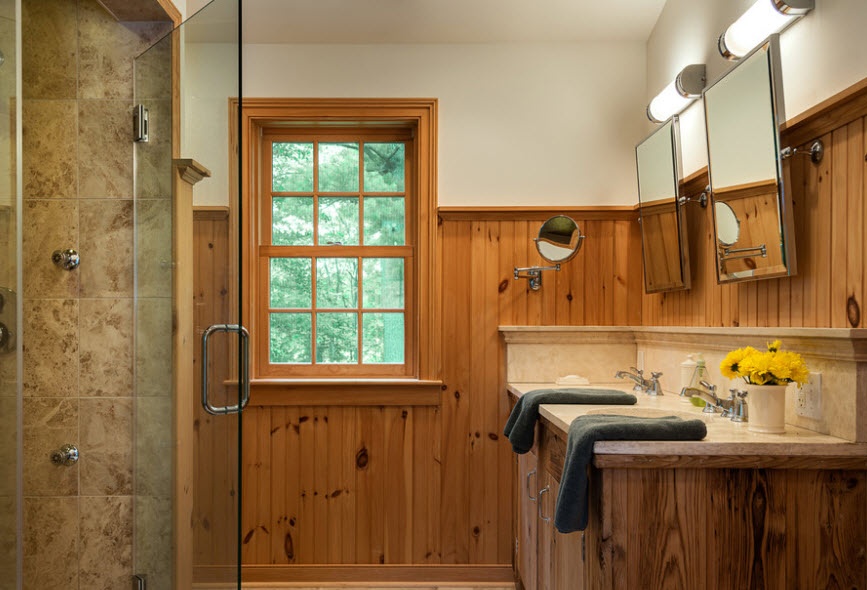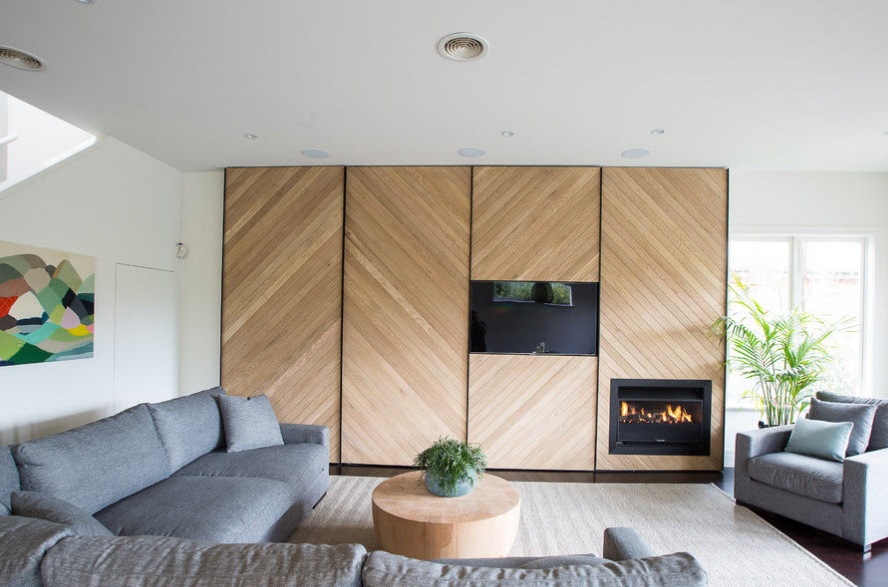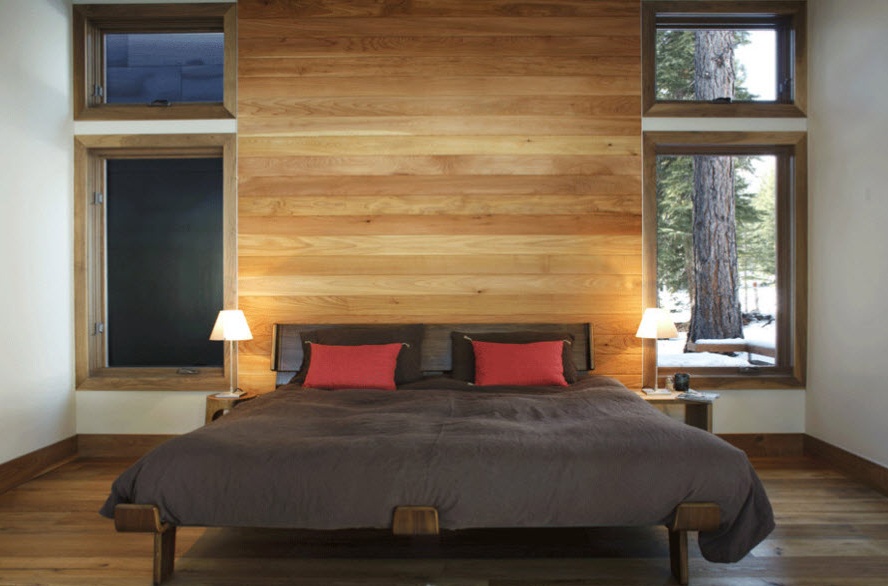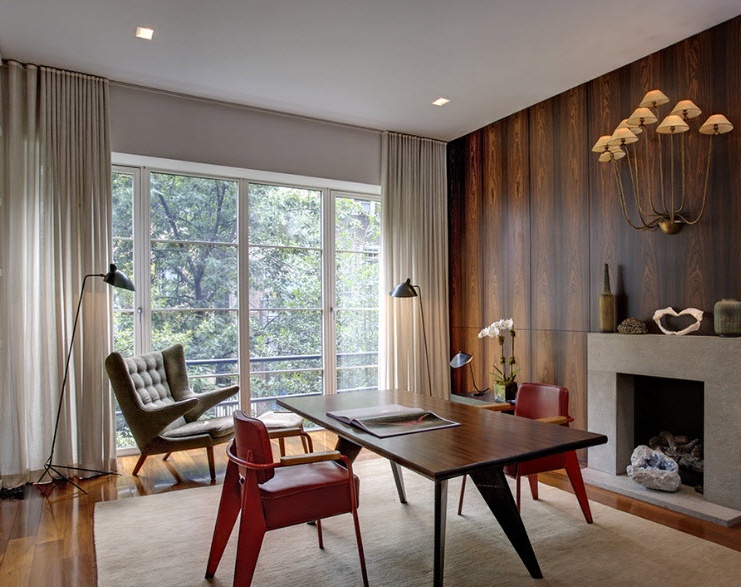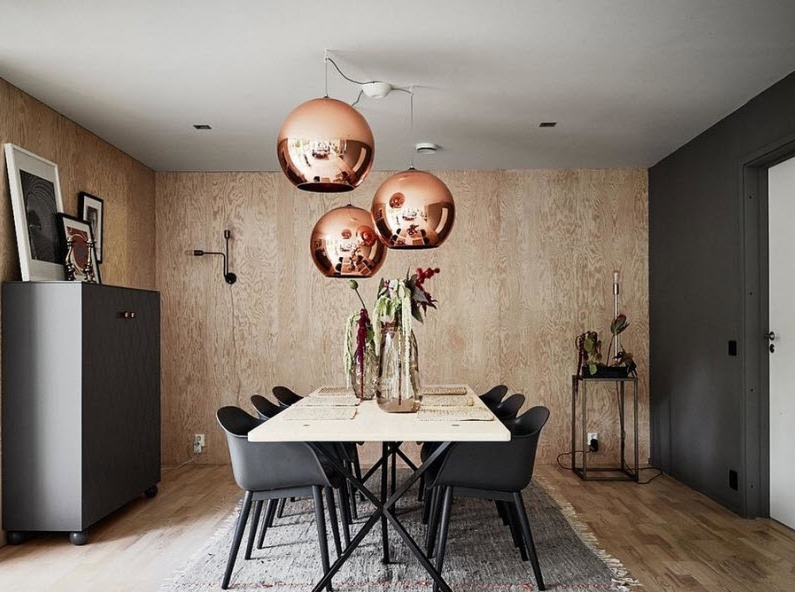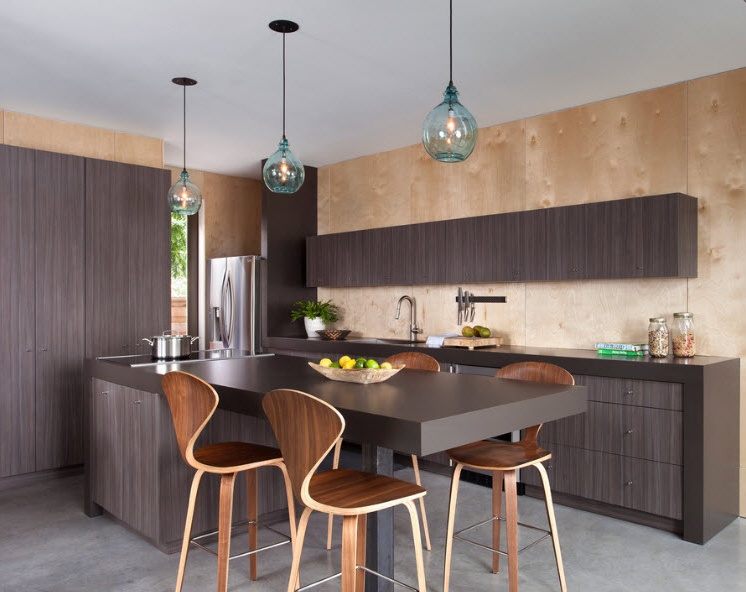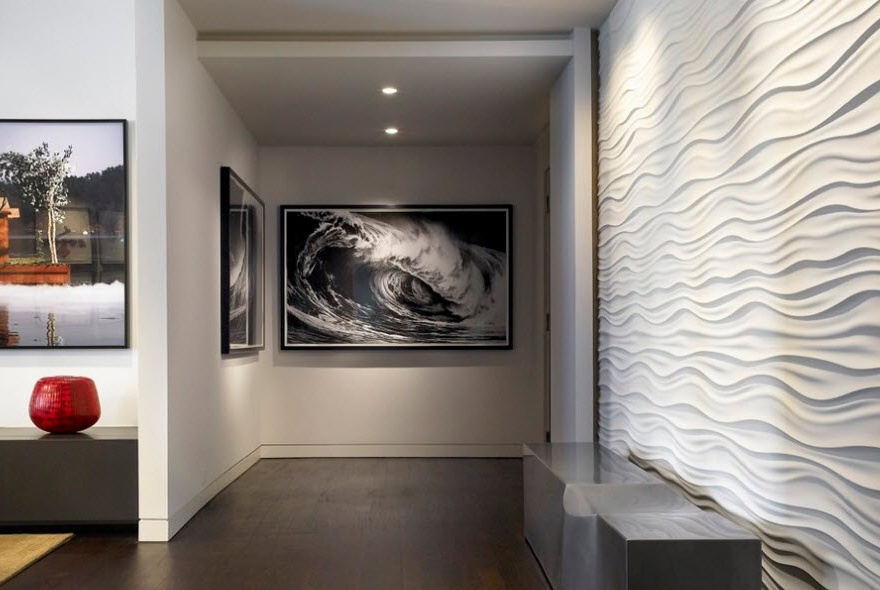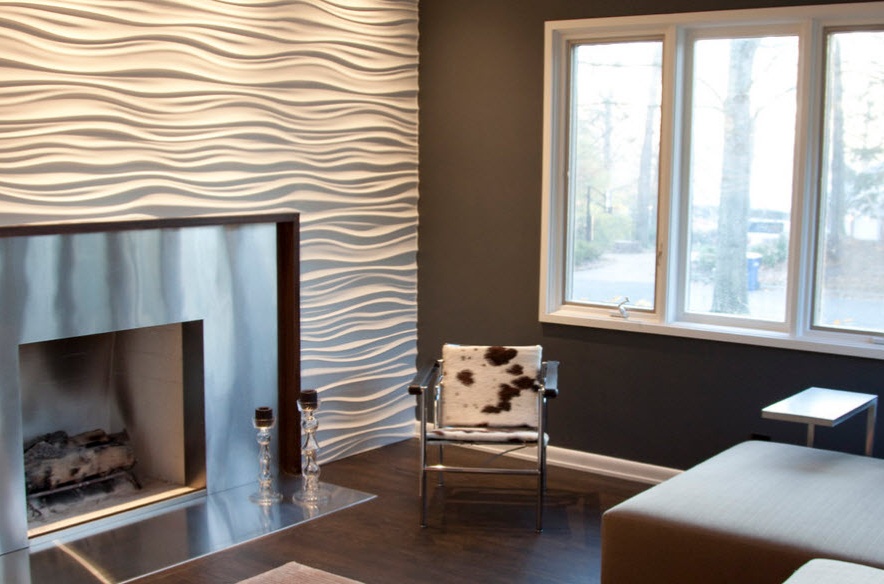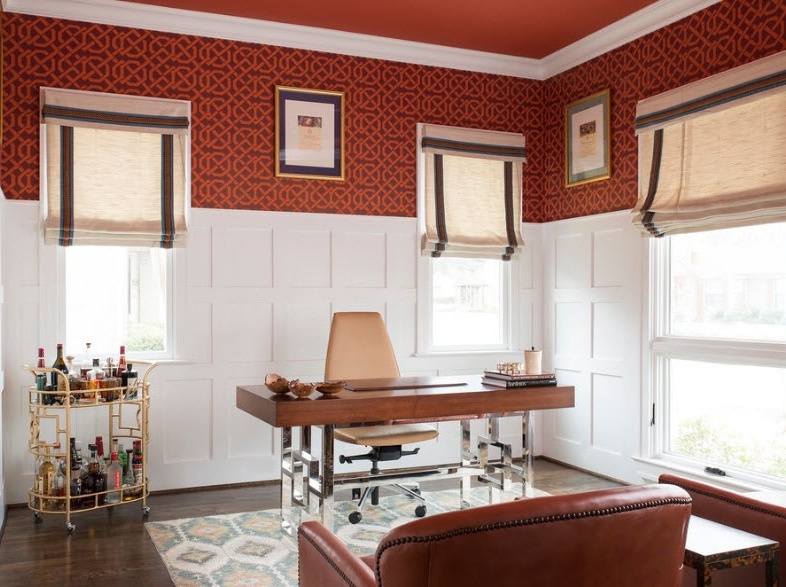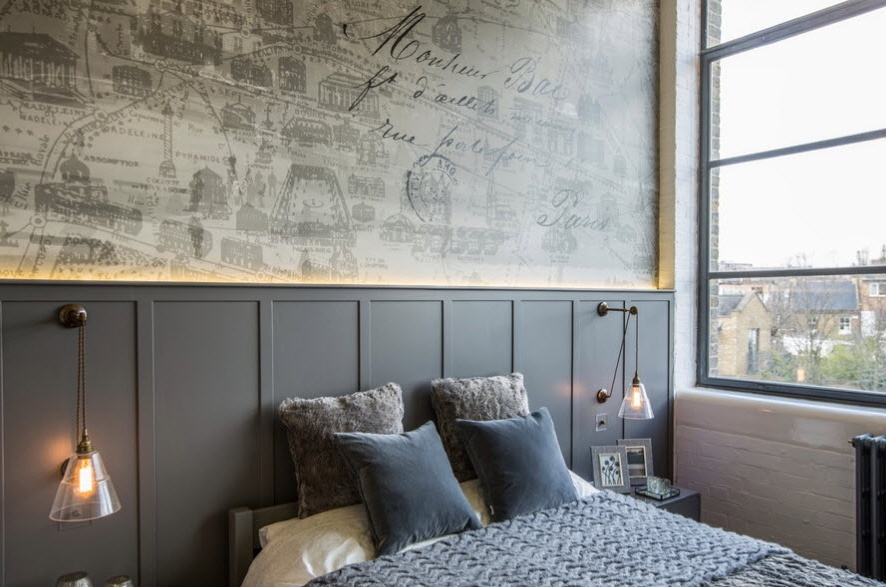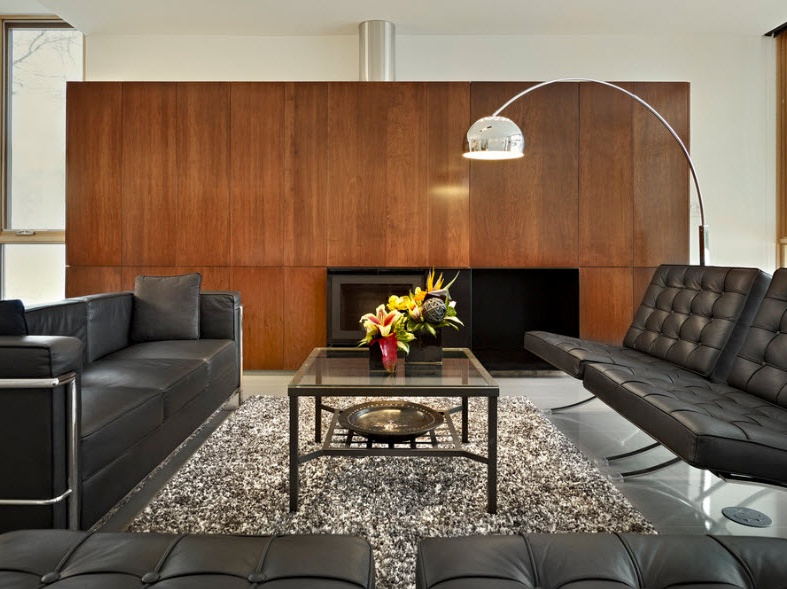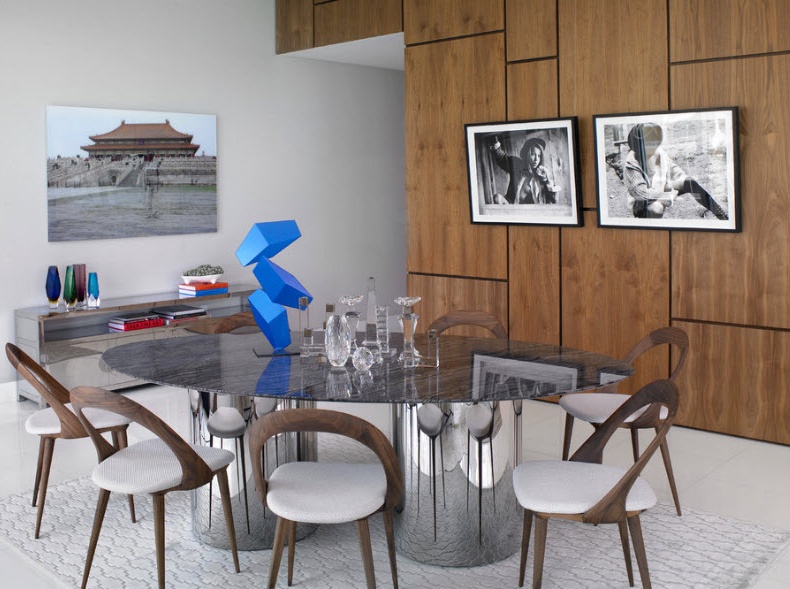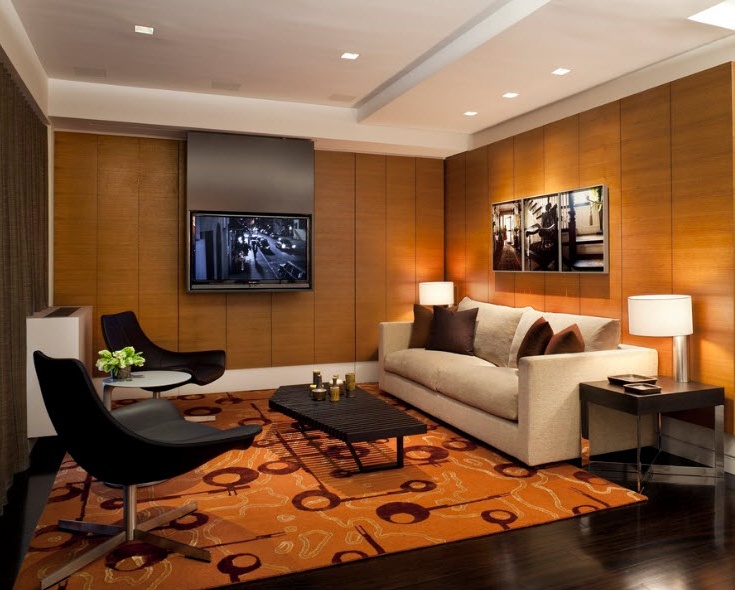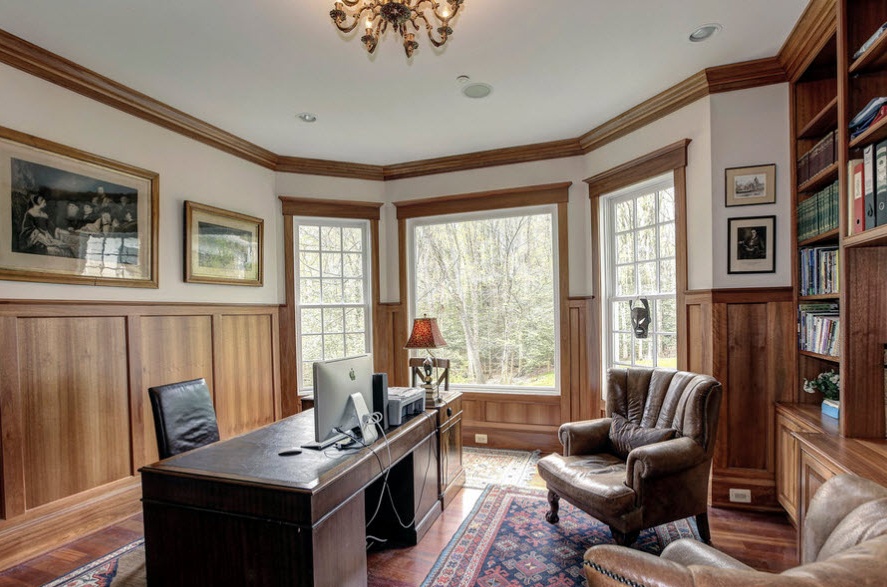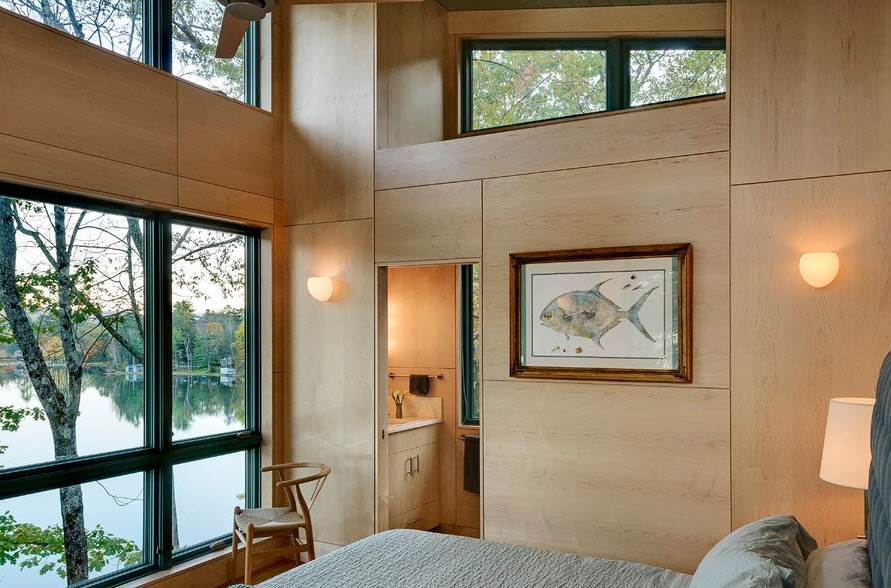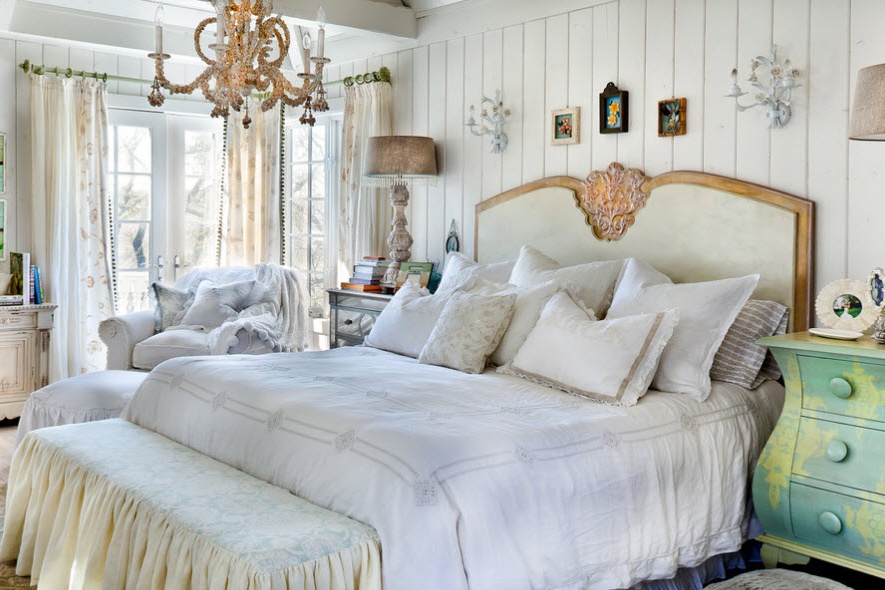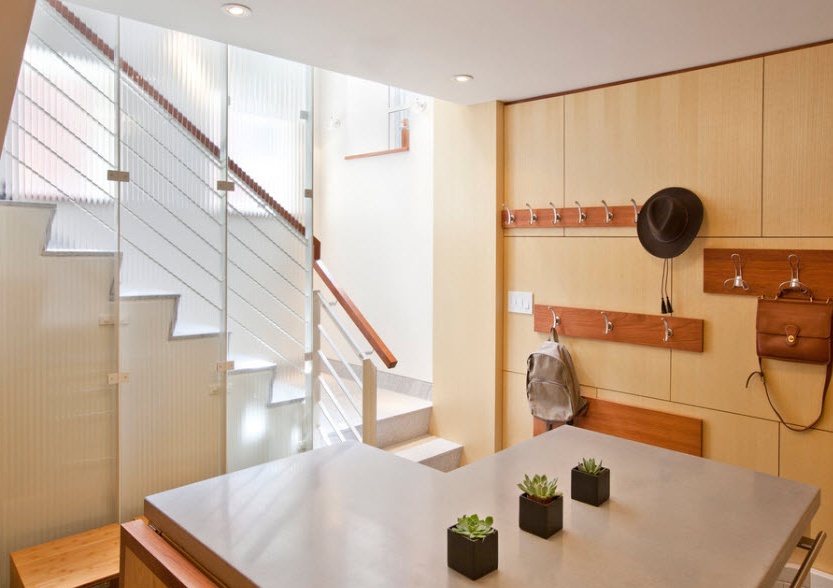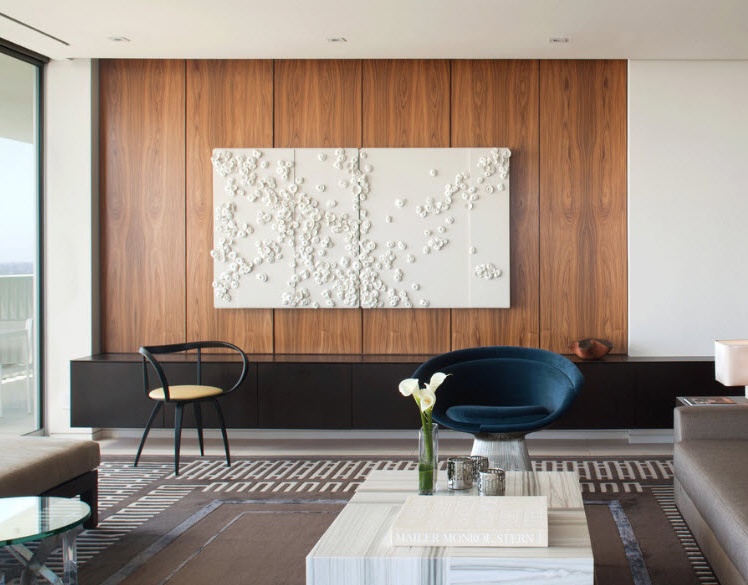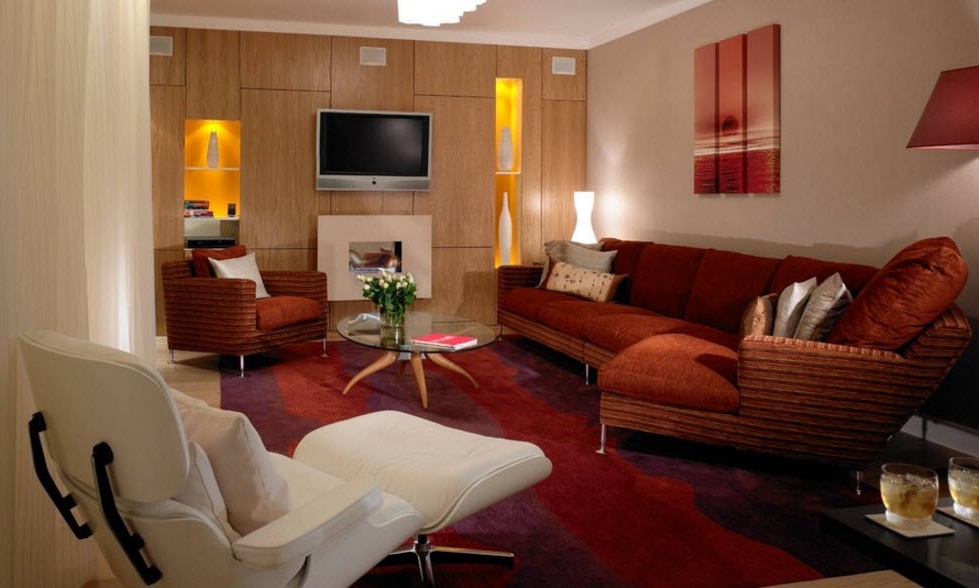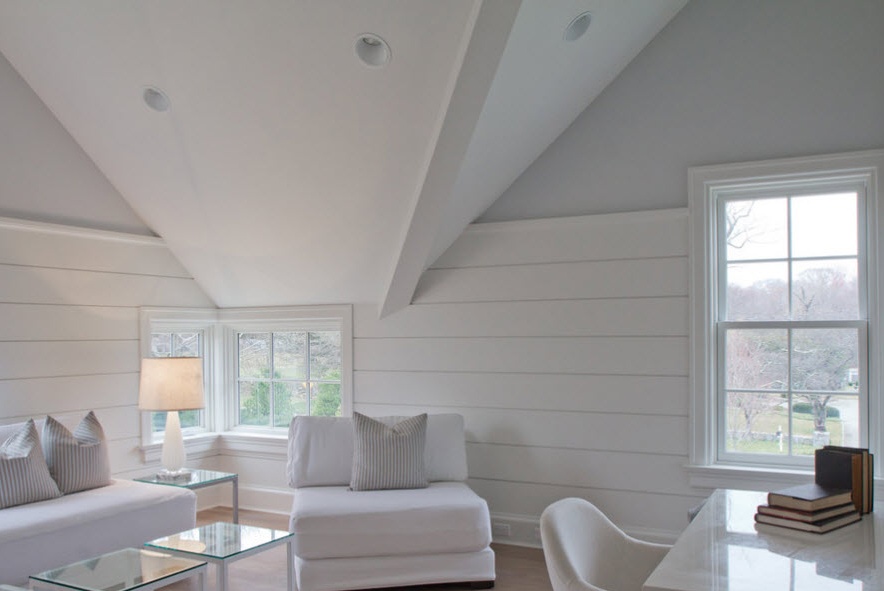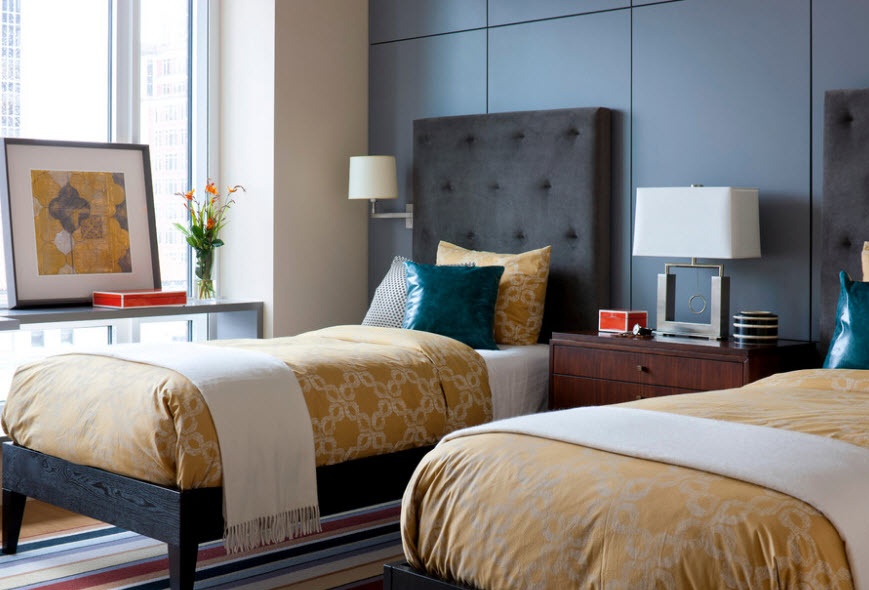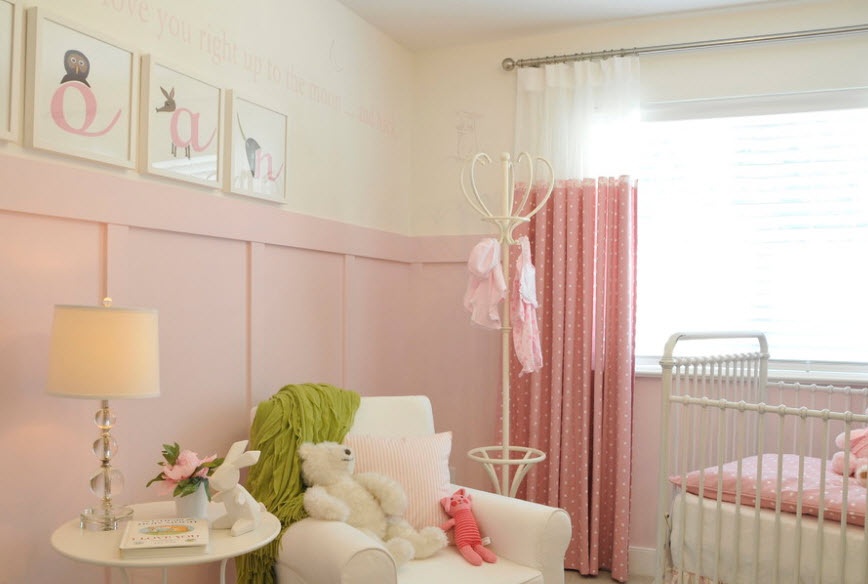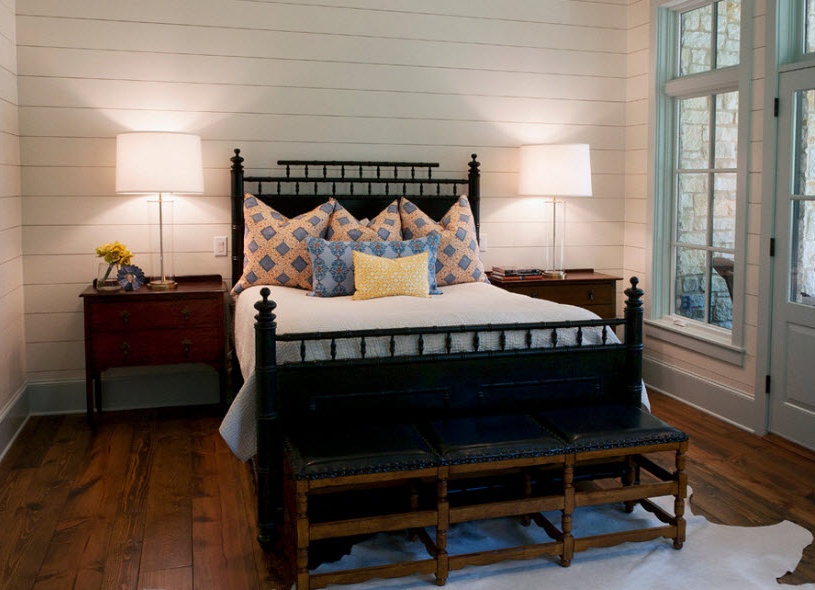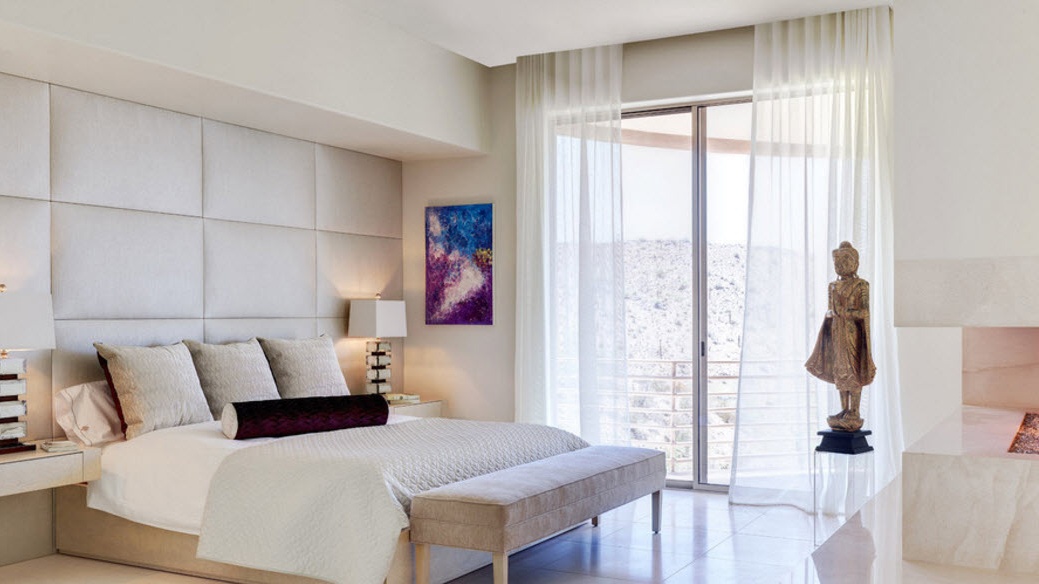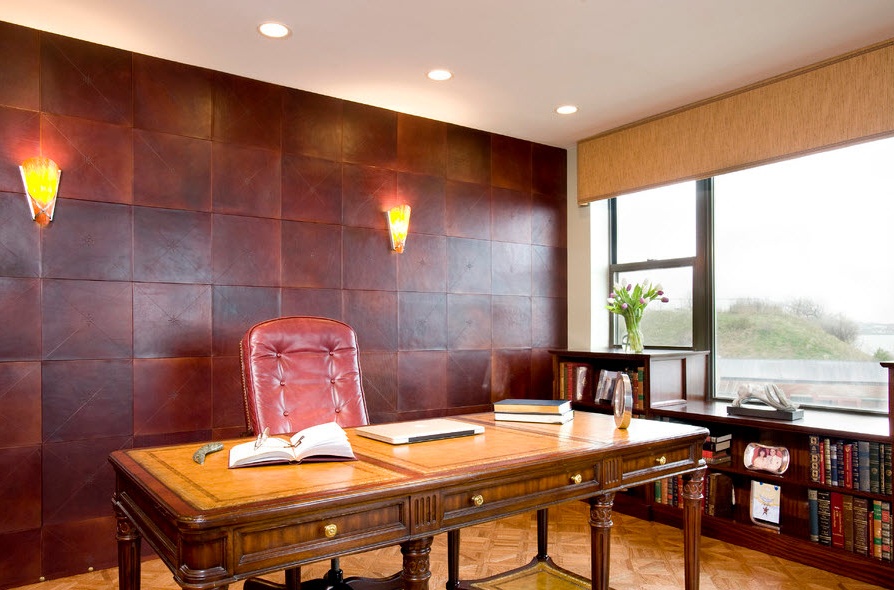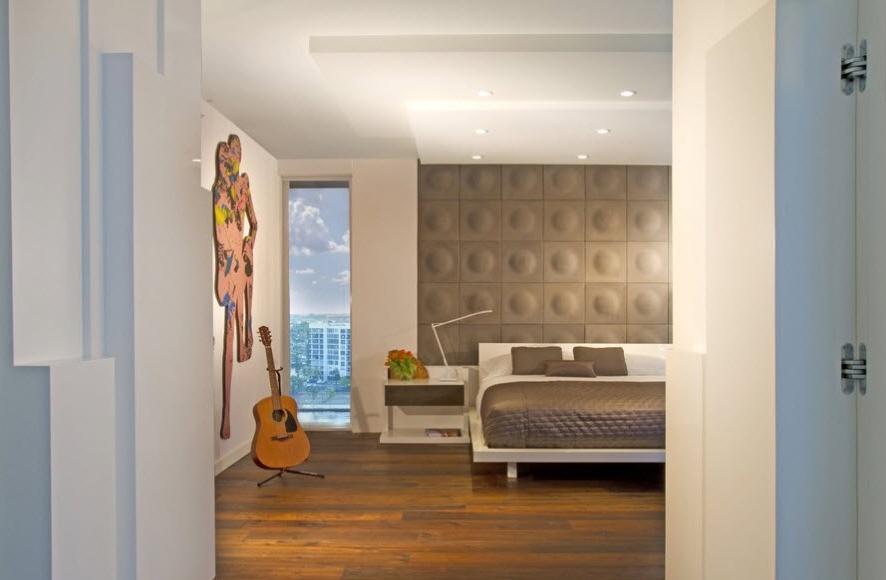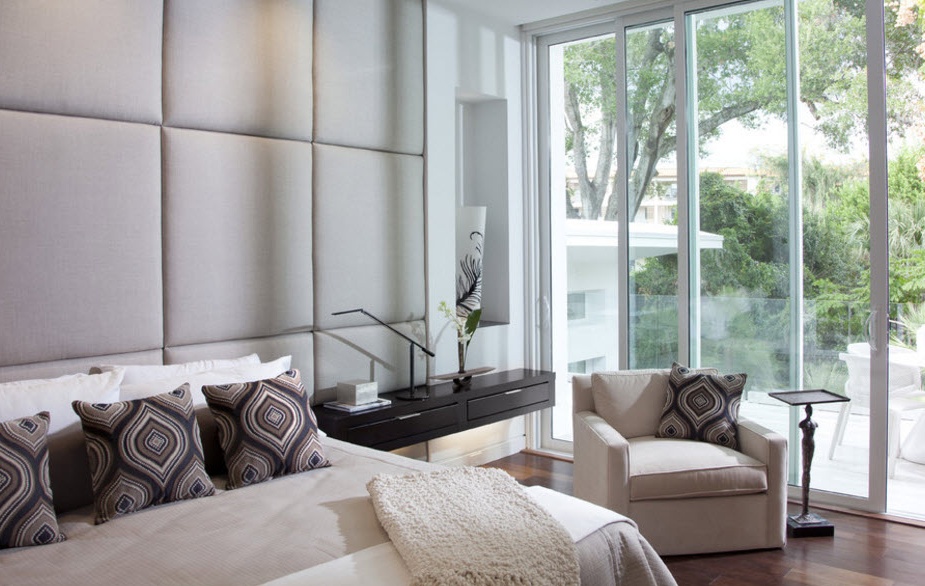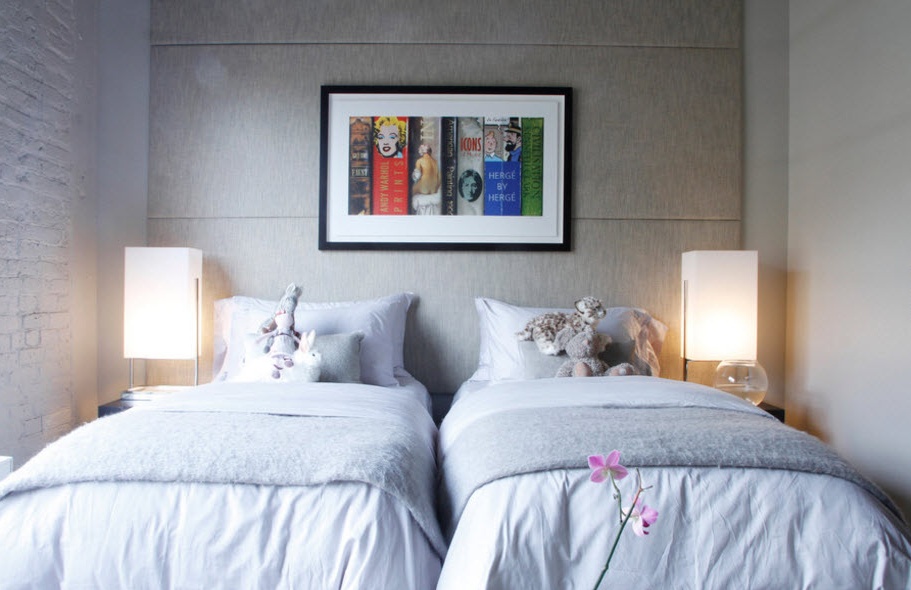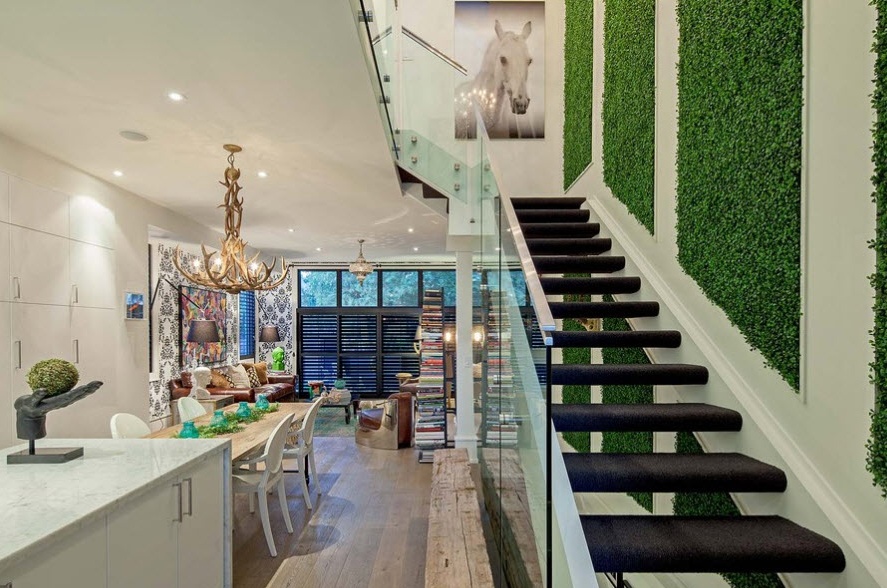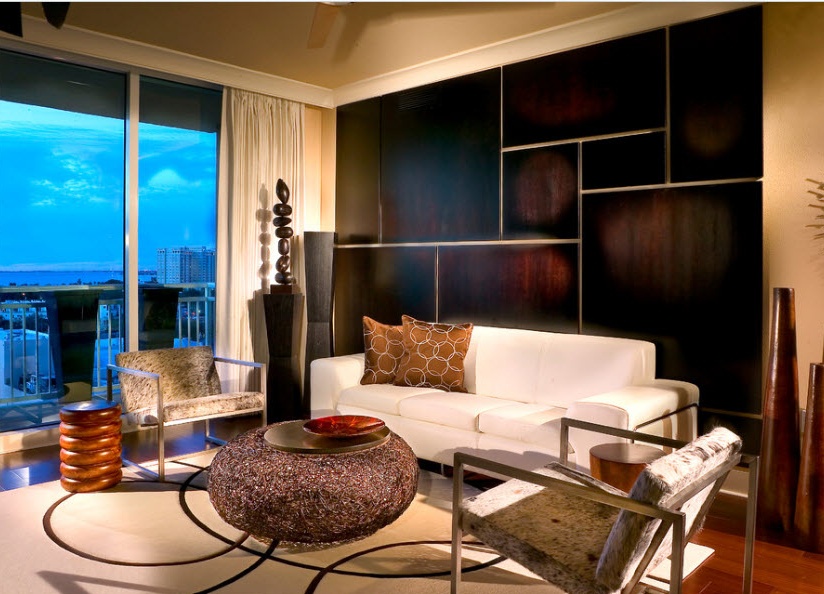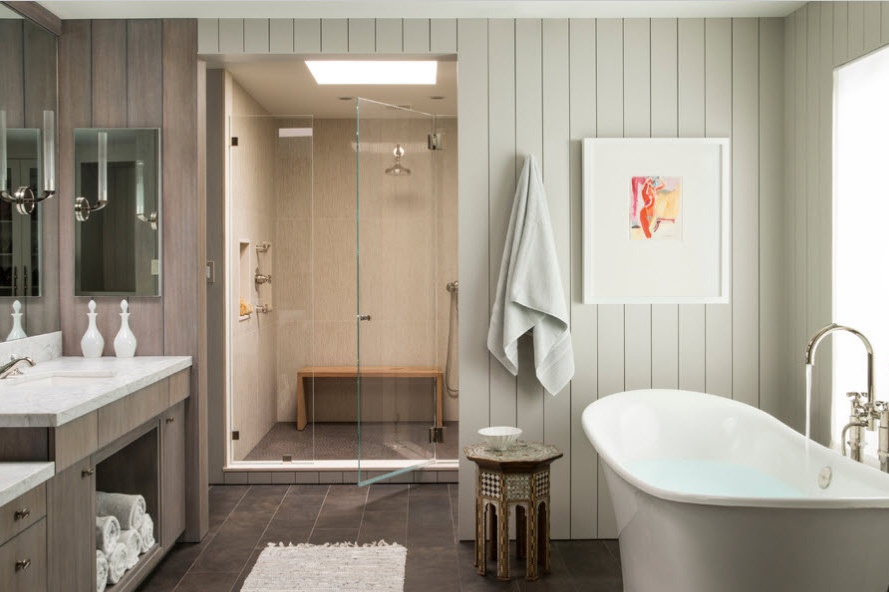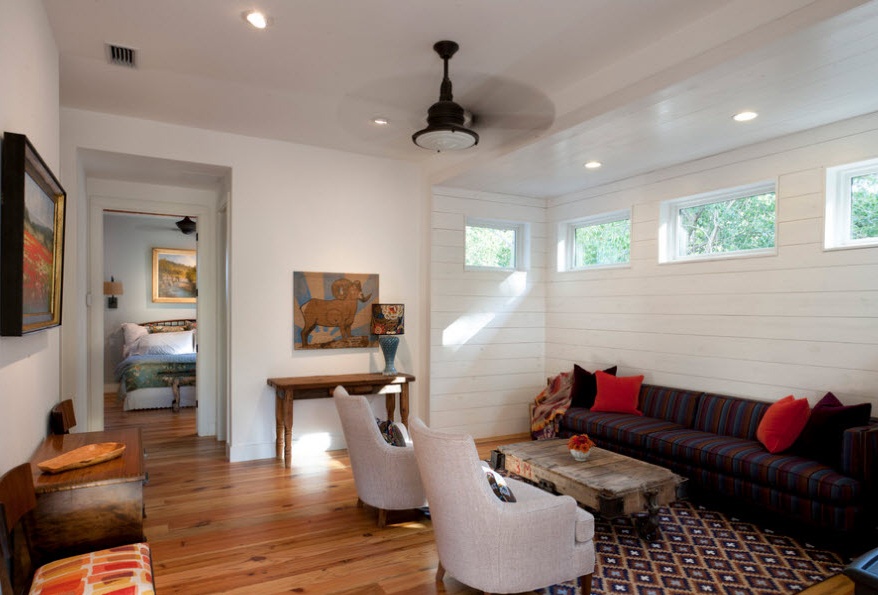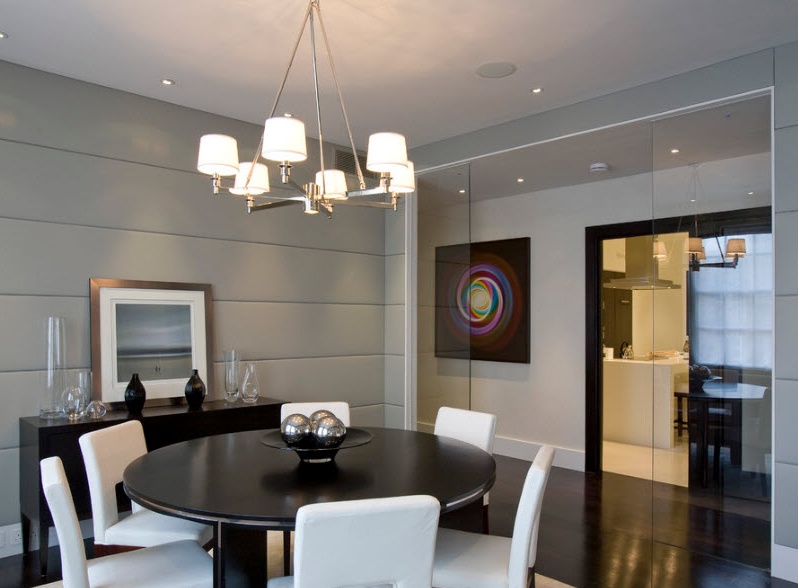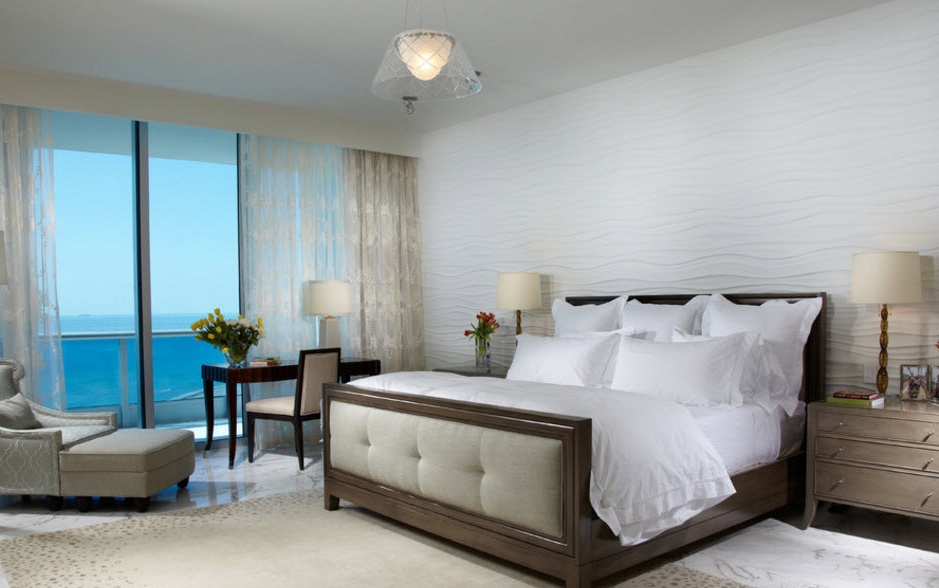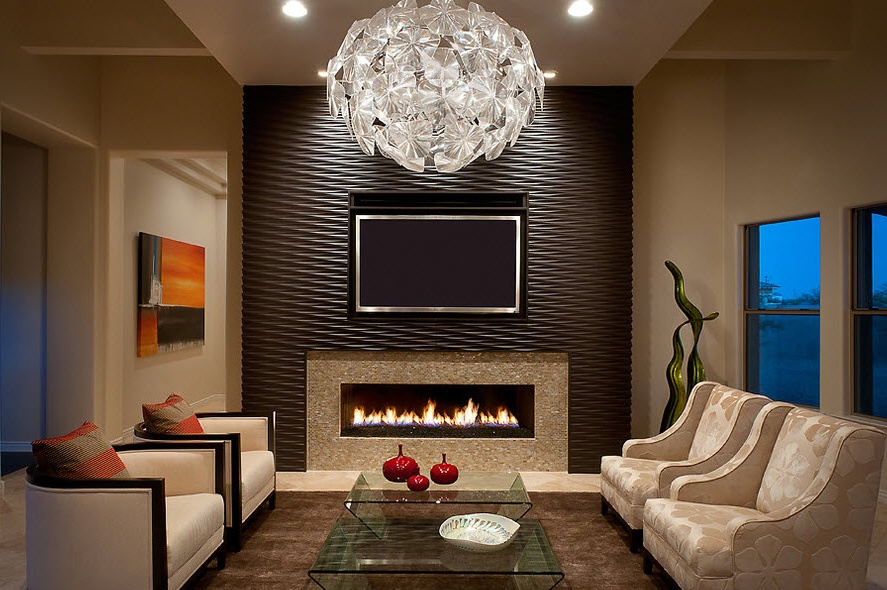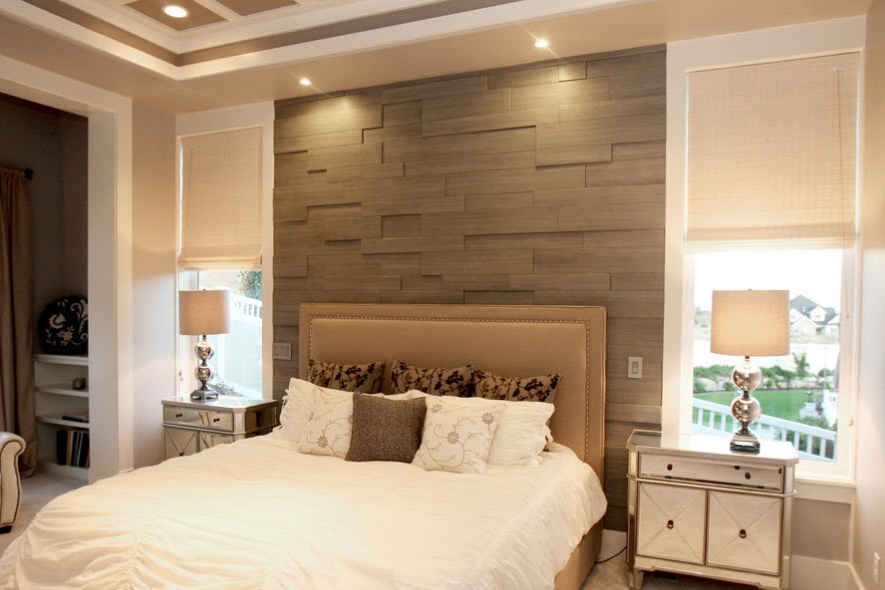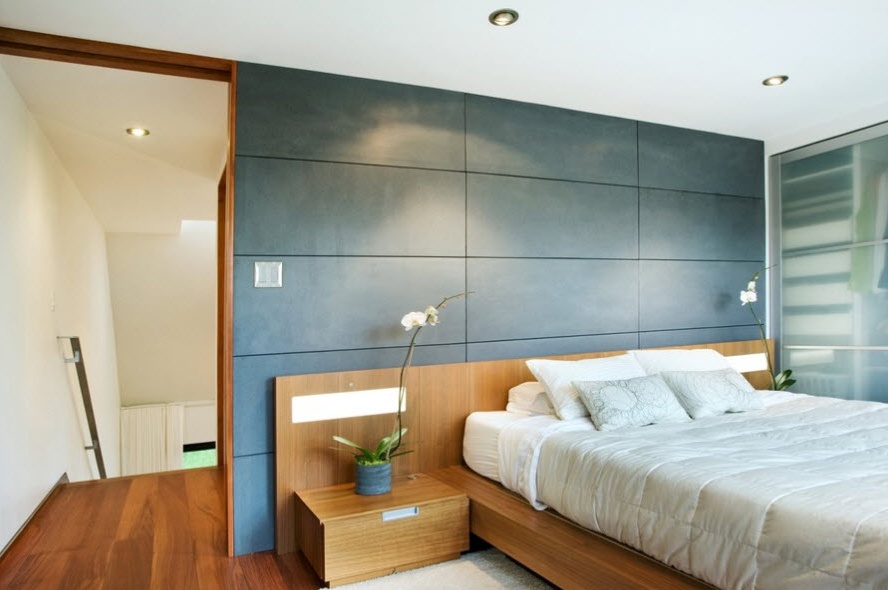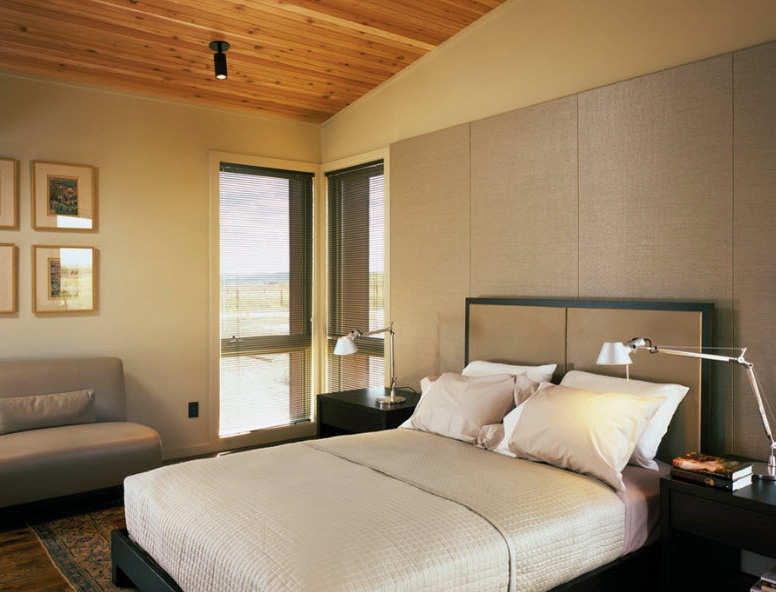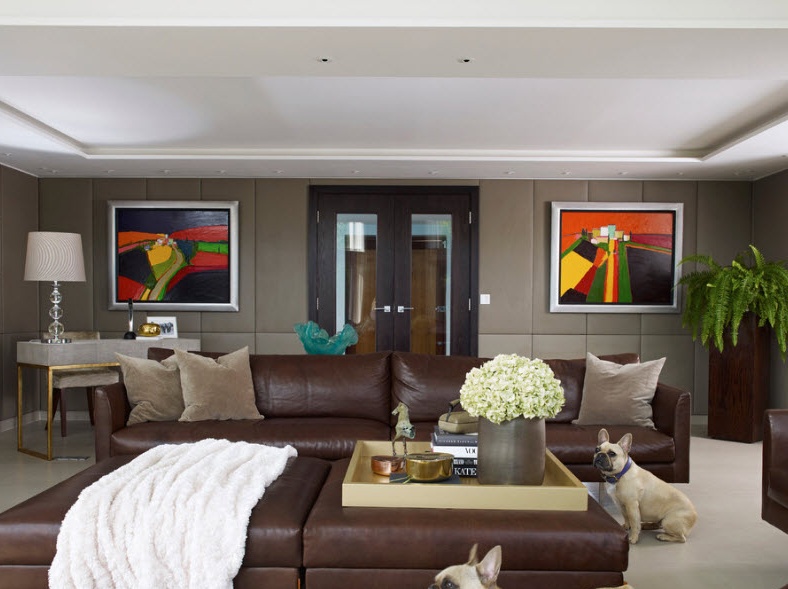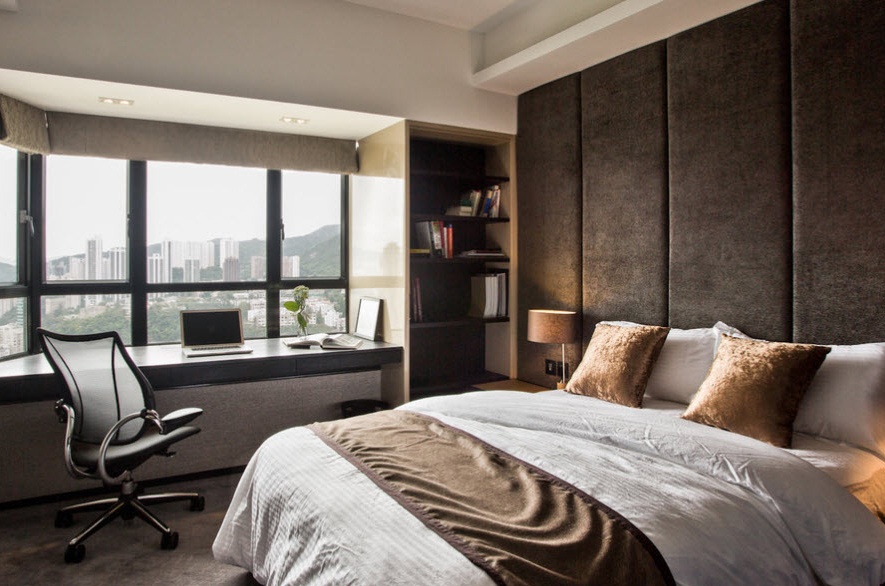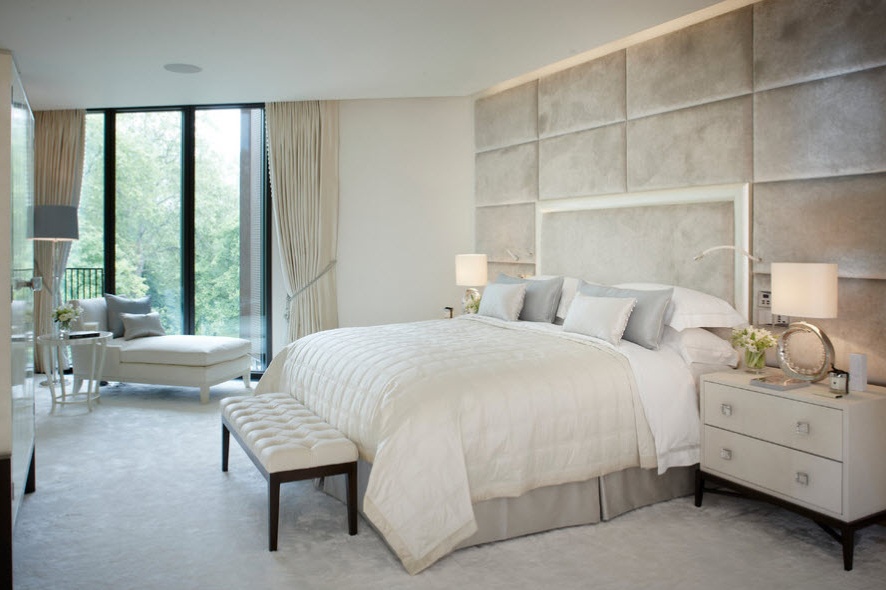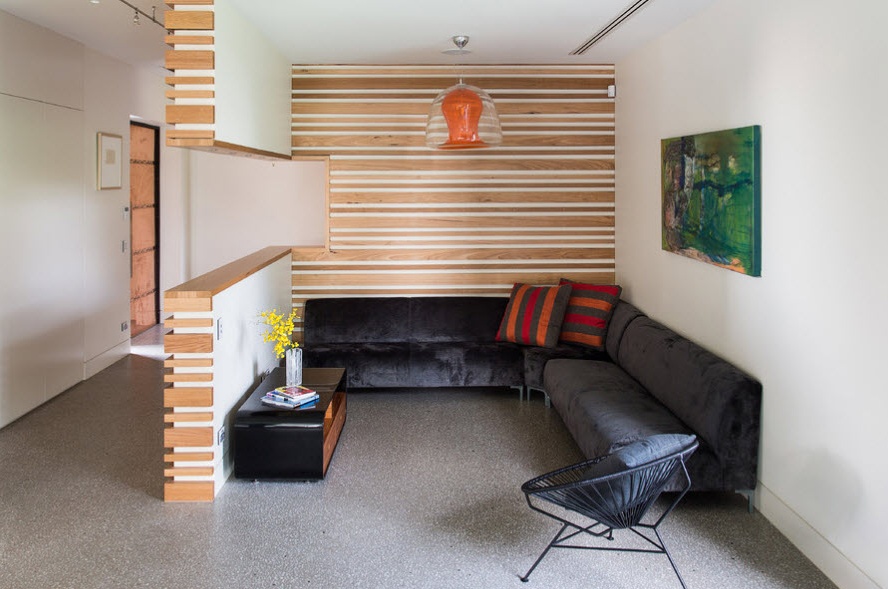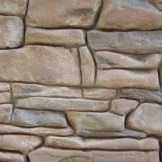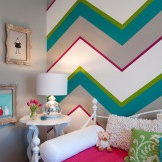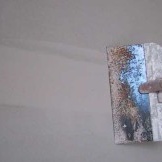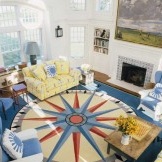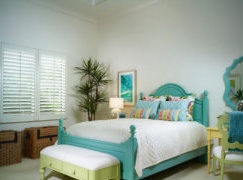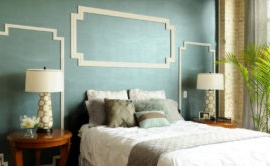Wall panels for modern interior decoration
The range of modern decoration materials stores is staggering. Some 20 years ago, our compatriots chose the method of surface treatment in their home between painting, whitewashing and wallpaper. Currently, there are many options for decorating walls and ceilings in rooms with a wide variety of purposes. Not the last place in popularity is occupied by such finishing material as wall panels. In this publication, we would like to highlight the options for surface finishing using wall panels, types and methods of installation, combination with other finishing materials.
Features of wall panels
Wall panels have many advantages:
- a wide range of colors and textures;
- the ability to create simulations of various natural materials (wood, stone, brick);
- ease of installation;
- the ability to hide surface imperfections;
- a large selection of price decisions and the ability to find your own option for the existing budget;
- the possibility of using finishing material in rooms with high humidity, temperature differences and a high level of surface pollution;
- durability of the created finish with proper operation and maintenance;
- the possibility of combining with other finishing materials to create the original design of the premises;
- selection of the size and geometry of products for the most optimal selection of finishing material with the least amount of waste (saving money and time).
Wall Panel Classification
Wall panels are distinguished by color, texture, size, method of attachment and shape. The image of the created interior largely depends on what type of wall panels you choose for decoration. So, in form, all wall panels can be divided into three classes:
- rack and pinion;
- tiled;
- leafy.
Let's consider in more detail each of the types of wall panels.
Rack panels
The rack or panel panels are narrow (not more than 30 cm) slats with a length of about 2.5 - 3.5 m and a thickness of not more than a centimeter, which can be attached to the walls both horizontally and vertically. Slatted panels are an ideal type of decoration for small rooms or rooms with complex geometry (for example, in attic spaces with many angles, bevels and niches).
In order to sheathe walls with slatted panels, it will be necessary to first create a metal or wooden frame of the so-called lathing. Cladding panels are connected to the frame using special fasteners - brackets (using a construction stapler) or self-tapping screws (a drill is useful). You can carry out this type of decoration yourself, having some skill in working with tools.
Rack panels can be made of the following materials:
- MDF;
- Fiberboard, particleboard;
- PVC
Typically, typesetting panels are sold with accessories, accessories, which is necessary for the design of joints, corners and other structural elements of the room to create a complete image.
Tiled Panels
This type of panel is made in the form of a square or slightly elongated rectangle. The side of the square in such products can have a size of 30 to 100 cm. This type of wall panel is mounted using glue or special fasteners - clamps. The main advantage of this type of panel is the ease of installation and the ability to create a finish almost without seams - the products are fastened by connecting grooves and inserts.
Tile panels are one of the most popular types of this type of finishing materials.Buyers are attracted not only by the rich color assortment and the opportunity to purchase products of both their natural and artificial materials, but also by choosing the optimal panel size at which it will be possible to minimize the consumption of raw materials and the amount of waste.
Sheet panels
The name of the panels speaks for itself - this is the largest type of finishing material in size, which is a canvas made of natural or artificial raw materials. Sheet panels help create a seamless finish on surfaces of a small area or cover as many walls as possible with the least amount of labor.
Sheet panels are multilayer canvases based on MDF, ZhVP or PVC with a printed pattern (imitation of wood, stone or any other surfaces) and texture. Sheet panels are most often used to create an accent surface, but they can also act in combination with other finishing materials for all walls of the room.
Separation of wall panels by material
Modern wall panels are made of various types of materials - from natural wood to plastic. To reduce the cost of products, manufacturers most often use a combination of various materials. But on sale you can also find panels made exclusively from natural raw materials - wood or glass, for example. Of course, for the high environmental friendliness of the goods will need to pay above the average market value of wall decoration panels. But the naturalness of the materials determines not only the magnificent aesthetics of the finish. But also the health, well-being of all those present in the room.
Natural wood wall panels
If you strive to create not only an aesthetic, but also a safe environment for humans and the environment, then it makes sense to you to consider using wood wall panels. Natural heat, which brings natural wood into the interior of the room, will be the key to creating a comfortable, safe, but functional environment. Most often, wall panels are made of the following types of wood:
- linden trees;
- oak;
- maple tree;
- cedar;
- bamboo.
As a rule, natural wood wall panels are made in the form of tiles or battens, it is not easy to meet the sheet type of this finishing material. An exception can be called only mosaic panels, which are based on fiberboard, on which pieces of wood of various species are glued (the difference in color and texture makes it possible to create truly original compositions).
In addition to the undeniable advantages in the form of a high level of aesthetics and environmental friendliness, wood wall panels also have their drawbacks. Given the ability of a tree to absorb moisture and promote the spread of fungus, panels of natural material cannot be used in rooms with high humidity (bathroom, laundry, kitchen apron area in the kitchen). If the panels are coated with protective varnishes or even painted, then the level of resistance to moisture will certainly increase, but the natural pattern of wood will change and the environmental friendliness of the decoration will significantly decrease.
Particleboard wall panels
In simple terms, chipboard panels are made from waste wood processing. Hence the availability and low cost. Despite the fact that chipboard is significantly inferior to natural wood, the affordable price makes this material the most attractive for most of our compatriots. Despite the fact that in the production of particleboard, adhesive compositions that are quite harmful to humans and the environment are used, this material is very widely used both in construction and in the decoration of residential premises.
Particleboard panels are usually not used without coating - their appearance leaves much to be desired.The use of plastic coatings of various colors and textures allows you to create interesting options for finishing material, imitation stone and wood.
Particleboard wall panels are available only in a tiled version. Sheet modification would not be possible due to the large weight of the products and the complexity of mounting the finished web. Panels for decorating walls from particleboard are not used for decorating rooms with high humidity and temperature extremes.
Finishing with fiberboard panels
Fiberboard panels are obtained by pressing wood fibers under high pressure. Fiberboard panels are the absolute leader in our segment of finishing materials in our country. Along with affordable cost, products have excellent technological qualities. Thanks to modern technologies and the use of natural raw materials, it is possible to achieve a wide range of color variations, images of the natural pattern of wood. Fiberboard is an organic mix of natural warmth and the dynamics of modern technology.
Fiberboard wall panels can be mounted both on the crate and directly on the wall (only previously dropped, peeled and dried). Between themselves, the products are connected using grooves or by a locking method. This is another clear advantage of the slat or tile panels made of fiberboard - a damaged product can be replaced without getting rid of the entire finish.
The disadvantages of the material for the production of wall panels include low moisture resistance. This finishing material can not be used for sheathing such rooms as a bathroom, a bathroom (in the hallway it is also not worth creating decoration in the zone of increased risk of moisture and pollution - at the entrance to the dwelling).
Most often, fiberboard acts only as the basis for creating panels. On top of the product can be trimmed with fabric, leather, treated with wooden, glass or ceramic mosaics. But the most common option is the use of lamination with the creation of original colors, various imitations.
Wall cladding with MDF panels
If we compare the MDF panels with the fiberboard material, then they are not so dense, which means they have less weight and are suitable for installation on any surface. A distinctive feature of MDF wall panels is their excellent sound and heat insulation properties. MDF panels are quite versatile - in the production process they can be made moisture resistant, fireproof, resistant to the onset and spread of the fungus. Obviously, such technological improvements entail an increase in the cost of finishing material.
PVC wall panels
PVC panels are a popular type of decoration for rooms with a wide variety of purposes. High moisture resistance, resistance to mechanical stress, ease of installation, relative low cost and sufficient juice service such finishes make it attractive to most of our compatriots.
PVC panels can be made in all three versions - sheet, rack and tile. Products with a base of fiberboard or MDF coated with a PVC film can imitate the natural material - wood, masonry or brickwork. Significant disadvantages of the PVC material include its artificial origin, which means low environmental friendliness of the finish.
Gypsum wall paneling
Imagine sheets of drywall (familiar to everyone for covering walls and ceilings, creating niches and other structural elements), but coated with a layer of vinyl. Unlike drywall, gypsum vinyl panels are ready to create the final finish - there is a pattern or plain color on their surface (the spectrum of colors is incredibly wide).
Not so long ago, gypsum vinyl panels were mainly used for decoration of office and public premises. Currently, this material, which is more durable than drywall, is also used for wall cladding in residential spaces.
Embossed panels or 3D wall decoration
Relief wall panels can be attributed to a separate category of original solutions for creating a reliable finish. As a rule, the basis for such products is fiberboard or MDF, the relief layer is most often created from gypsum, and covered with a PVC film on top. Sometimes wood or metal reinforcement is used to make the 3D layer, but the cost of such panels will be significantly higher than those made of gypsum.
Most often, relief panels for wall decoration are presented in the form of sheets, less often in the form of large tiles. In any case, the decoration using panels with a pronounced texture allows you to create original images of the premises, to bring creativity to the interior.
Textile or leather panels in a modern interior
Soft panels are most often used to decorate sleeping rooms, children's rooms, sometimes - to create an accent wall in the living room. Excellent sound insulation, environmental friendliness and an original appearance - that bribes our compatriots to use textiles or leather to finish all or accent walls in the premises of their homes.
If you decide to purchase wall panels with a coating of leather, then pay attention to artificial analogues - they are much cheaper than natural material, and externally have similar aesthetic properties. Soft panels made of artificial leather are easy to maintain and incredibly practical - they withstand moisture, do not fade in the sun, they can be cleaned with a damp sponge and wiped dry to achieve perfect cleanliness.
And in conclusion
Experts do not recommend purchasing decorative materials in the form of panels online, unless there is no other way. Before buying, you need to familiarize yourself with the quality of the products, check the labeling, make sure that the material is safe and not toxic, having studied the certificates of compliance:
- check the following indicators on the panel label - flammability, flammability, smoke generation and toxicity (the higher the class, the worse - from 1 to 4);
- buy panels from one batch - shades may vary (batch number on the package label);
- check the integrity of the products themselves and the castle joints or puzzles (stores very rarely go to replace products with a barque after the purchase is completed).

